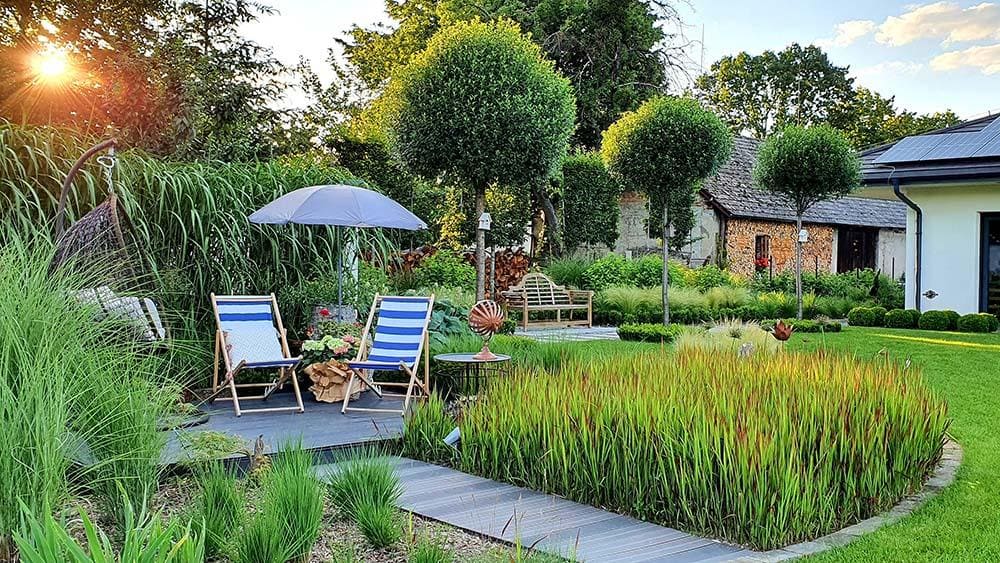A&G LANDSCAPE COMPANY LLC: Crafting Your Outdoor Oasis

Strategic Pathways to Outdoor Transformation
Creating an exceptional outdoor environment requires thoughtful planning and execution. Understanding various approaches to landscape development can significantly influence the final outcome. Below, we outline key methods to consider for your next outdoor project.
Key Landscape Development Approaches
-
Phased Development Approach: This method involves implementing landscape elements incrementally. It allows for observation and refinement of each addition, achieving desired aesthetic and functional outcomes over time with adaptable adjustments. (175 chars)
-
Comprehensive Master Plan: Design the entire outdoor space meticulously upfront. This ensures a unified vision and seamless integration of all features, promoting long-term structural and visual harmony across the property. (176 chars)
-
Specialized Feature Focus: This approach prioritizes a singular, prominent landscape element, such as a custom patio, a serene water garden, or an elaborate outdoor kitchen. Subsequent design decisions then enhance and complement this central feature. (176 chars)
Essential Evaluation Criteria
When comparing these approaches, consider the following criteria to ensure your chosen method aligns with your aspirations and practical requirements.
-
Aesthetic Cohesion: How well design elements blend to create a visually harmonious and unified outdoor environment. (104 chars)
-
Functional Utility: Practicality and usability of the space, ensuring it meets specific lifestyle needs and activity requirements. (110 chars)
-
Resource Management: Efficiency in utilizing materials, time, and ongoing care to sustain the landscape's beauty and structure. (117 chars)
-
Adaptability & Evolution: Ease of modifying, expanding, or updating the landscape to accommodate future changes or preferences. (117 chars)
Comparative Analysis of Landscape Approaches
The Phased Development Approach offers flexibility for Aesthetic Cohesion. Elements are added incrementally, allowing careful integration and refinement. This fosters an organically evolving beauty, though consistent oversight is crucial to prevent fragmentation without an initial overarching vision. Each stage builds thoughtfully.
For Functional Utility, phased development lets users assess each section's practical use as completed, ensuring maximum effectiveness. This iterative process optimizes layouts. Regarding Resource Management, it permits controlled allocation of materials and time. However, revisiting previous stages might incur additional efforts.
The Comprehensive Master Plan excels in Aesthetic Cohesion. Designing the entire landscape upfront guarantees a unified vision and seamless integration of all components. This holistic approach ensures a cohesive, polished final result. For Functional Utility, a master plan allows precise feature placement, optimizing flow and purpose.
For Resource Management, a master plan facilitates detailed material and timeline planning, potentially leading to greater efficiency in execution. While initial planning requires effort, it streamlines construction. Adaptability & Evolution is limited; significant changes after design finalization can be complex, requiring rework.
The Specialized Feature Focus approach begins with a central element. For Aesthetic Cohesion, this feature becomes the focal point, with surrounding elements complementing it. This creates a strong visual anchor. For Functional Utility, this method ensures the primary feature is optimized for its purpose, providing immediate utility.
Concerning Resource Management, this approach is highly efficient initially, concentrating efforts and materials on the core feature. This allows for focused allocation of resources. Expanding later might require complex planning. For Adaptability & Evolution, adding subsequent features is straightforward if planned, but shifting the primary focus is challenging.
Recommendations for Your Outdoor Project
Choose Phased Development for gradual transformation, allowing evolving preferences and real-time testing of elements. Ideal for spreading project scope over time, enabling careful observation and informed decision-making at each stage.
Opt for the Comprehensive Master Plan if your vision for the entire outdoor space is clear, desiring a fully integrated and cohesive design from the outset. This method suits larger projects or when a grand aesthetic is paramount.
Select the Specialized Feature Focus if a high-priority element, like an outdoor kitchen or water feature, is key. This ensures your most desired amenity is perfectly executed, serving as a strong foundation for future enhancements.
Selecting the right approach depends on your unique goals, timeline, and property. A&G LANDSCAPE helps you make this informed choice, ensuring your method translates into a beautiful, functional outdoor oasis.